The Mystery of the Vintage Works of George Eliot
As the new year approaches, I’m getting more and more excited to begin the 2023 George Eliot Chapter-a-day Read-along. Not only am I looking forward to spending an entire year immersed in the fiction of Mary Ann Evans (aka George Eliot), but I’m also excited to read the the vintage set of her works that I found at a used bookstore this past year. Just as George Eliot has stories to tell through her novels, so this antique set of her works has stories to tell. While I’m not a serious book collector who knows all about rare books or first editions, I do love beautiful vintage books and the mysteries they contain. And this particular set of books definitely has its own set of mysteries.
I discovered the collection while browsing in the Classics Room of one of my favorite used bookstores, 2nd Look Books, in Spokane, Washington. The Classics Room is in the basement of the store in one of the back corners, and as you walk through its doorway you are greeted with the lovely sight of shelves filled with individual volumes of vintage literary sets like the Great Books of the Western World, the Harvard Classics Library, and Will Durant’s Story of Civilization. To your left is the Shakespeare section and behind you are volumes of classic poetry. But on this particular day it was the wall on the right that drew my attention, the shelves of classic novels.
On the very top shelf, where the overstock is usually kept, I spied a set of antique hardcover books with dark moss-colored spines and gilt titles, nineteen volumes in all. They seemed to me like the kind of books one might find in the library of a castle in a gothic novel–ancient, dark, and exotic. At the top of each spine I read “Works of George Eliot.” After leafing through the various volumes and spending some time getting a feel for them, it didn’t take long to decide that this was a set I wanted in my own library. Thanks to some trade-in credit I had accumulated over the past years, I carried the entire set out the door with very little impact on my bank account.
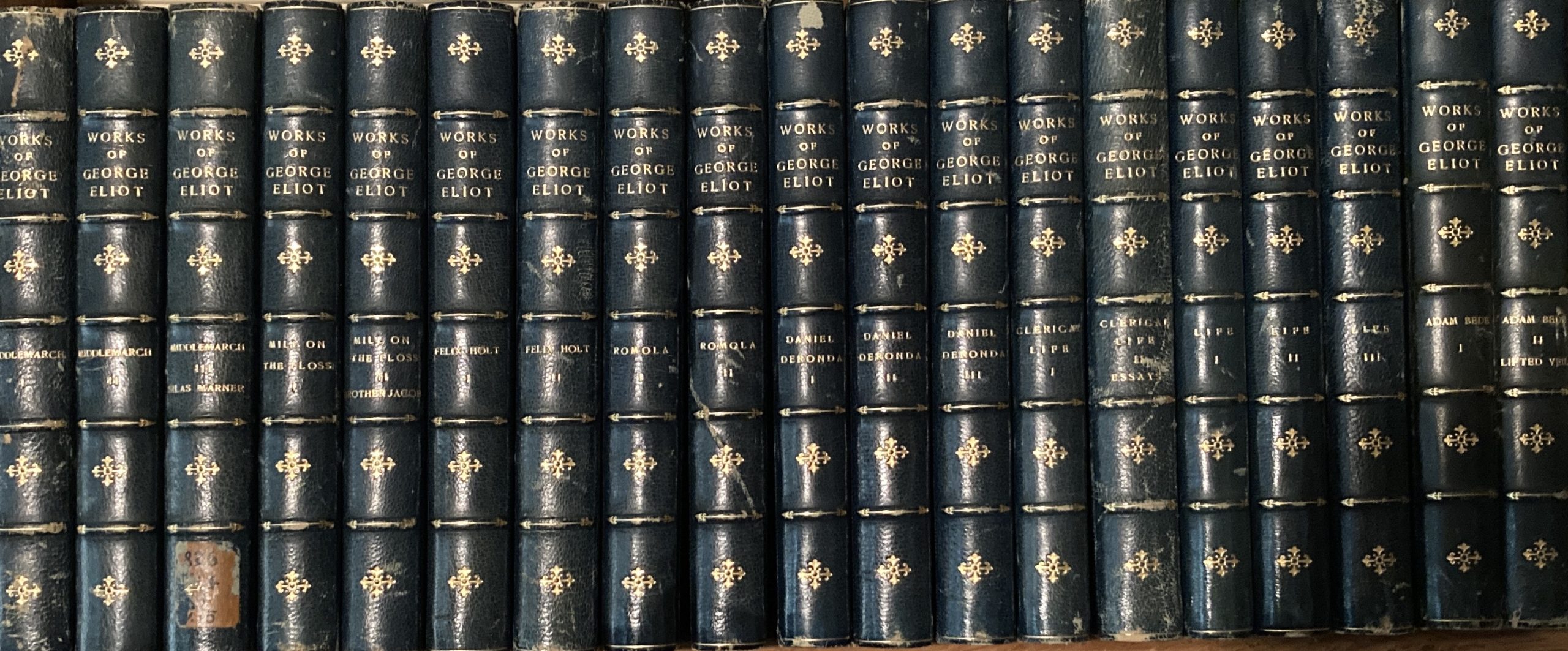
Once I got the set home and begin browsing through it more thoroughly, a bookplate in each volume informed me that it did, in fact, come from a library, the library at the College of William and Mary in Virginia. Not quite a gothic library, but almost. And wonder of wonders, the books still had library cards in them! Many of the books were checked out in the 1940s, which means they would have been shelved at a building that was originally called simply The Library, but which is now known as Tucker Hall. The Library was built in 1909 with money donated by Andrew Carnegie and served as the main library until 1966 when the new Swem Library was built. So this set of books most likely resided in The Library until 1966 and then moved to Swem Library where it stayed until at least 1973, according to the latest check-out date I could find in the back of the books. So far I have not discovered when the set was taken off the shelves, but each volume is stamped in the front with the words “Sent to be withdrawn.”
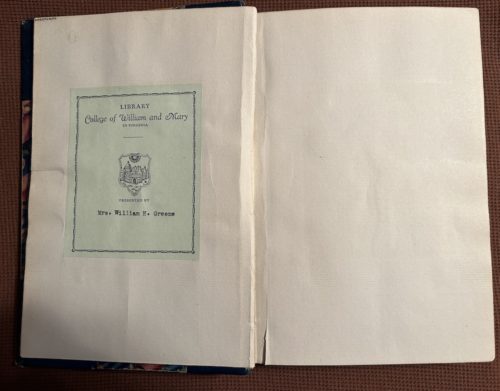 The bookplate also said the set was donated to William and Mary College by someone named Mrs. William H. Greene. One of my biggest questions became, Who was Mrs. William H. Greene? Some internet sleuthing produced a 1950-1951 bulletin from the College of William and Mary that announces the recipients of “The Greene Scholarships. Established in 1948 through a bequest of $60,000 by Mr. and Mrs. William H. Greene of Westchester County, New York, as memorials to John Blair and Mary Blair, James Henry Ruggles and Susan Blair Ruggles, William H. Reynolds, and Agnes E. Reynolds, and the donors, William and Aimee Ruggles Greene.”
The bookplate also said the set was donated to William and Mary College by someone named Mrs. William H. Greene. One of my biggest questions became, Who was Mrs. William H. Greene? Some internet sleuthing produced a 1950-1951 bulletin from the College of William and Mary that announces the recipients of “The Greene Scholarships. Established in 1948 through a bequest of $60,000 by Mr. and Mrs. William H. Greene of Westchester County, New York, as memorials to John Blair and Mary Blair, James Henry Ruggles and Susan Blair Ruggles, William H. Reynolds, and Agnes E. Reynolds, and the donors, William and Aimee Ruggles Greene.”
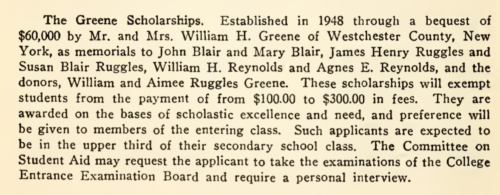 So it appears that Mrs. William H. Greene is Aimee Ruggles Greene. More sleuthing revealed that in the 1940 census Aimee Ruggles Greene was 70 years old and lived in Westchester, New York with her husband William H. Greene, age 80. Their household included a housekeeper named Elizabeth Castiel (age 47), her son Jack Castiel (age 23), and a chauffeur named Harry Castiel (age 60). Mr. and Mrs. William H. Greene must have been pretty well off to afford a housekeeper and a chauffeur, and to be able to donate an entire set of the works of George Eliot, to say nothing of establishing a $60,000 scholarship in 1948.
So it appears that Mrs. William H. Greene is Aimee Ruggles Greene. More sleuthing revealed that in the 1940 census Aimee Ruggles Greene was 70 years old and lived in Westchester, New York with her husband William H. Greene, age 80. Their household included a housekeeper named Elizabeth Castiel (age 47), her son Jack Castiel (age 23), and a chauffeur named Harry Castiel (age 60). Mr. and Mrs. William H. Greene must have been pretty well off to afford a housekeeper and a chauffeur, and to be able to donate an entire set of the works of George Eliot, to say nothing of establishing a $60,000 scholarship in 1948.
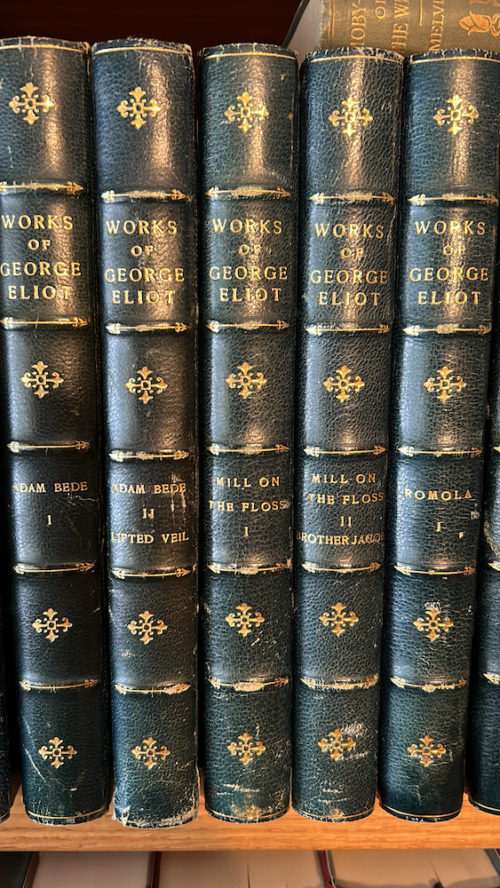 So why would Aimee Ruggles Greene donate the Works of George Eliot to the college? Was it from her personal collection, or did she simply provide the money? Was George Eliot her choice or was it something the college wanted? And why is only her name on the bookplate and not the name of her husband? Maybe she donated the set after William passed away? And what was the Greene family’s connection to the College of William and Mary? Was that William’s alma mater? It’s unlikely that Aimee attended the college, since she was about 48 years old when William and Mary went coed. Perhaps one of their children went there? So many questions about the origin of this collection!
So why would Aimee Ruggles Greene donate the Works of George Eliot to the college? Was it from her personal collection, or did she simply provide the money? Was George Eliot her choice or was it something the college wanted? And why is only her name on the bookplate and not the name of her husband? Maybe she donated the set after William passed away? And what was the Greene family’s connection to the College of William and Mary? Was that William’s alma mater? It’s unlikely that Aimee attended the college, since she was about 48 years old when William and Mary went coed. Perhaps one of their children went there? So many questions about the origin of this collection!
I also have questions about what happened after it was withdrawn from William and Mary. How did this set of nineteen large volumes get from Williamsburg, Virginia, all the way across the country to Spokane, Washington? If the set was withdrawn from the library in the 1970s or 80s, then perhaps someone purchased them from the library and then moved to Spokane. I didn’t ask 2nd Look Books about where they got the set, but perhaps it’s worth asking the next time I’m there.
So much for questions about the origin of the books and their original owners. My next set questions have to do with the books themselves. First, I am curious about how old the set is and whether it’s complete. The set is definitely older than 1944, which is the earliest check-out date in the back of the volumes. And it’s definitely newer than 1908, which is the copyright of the one of the pictures. It appears to be published by Brentano’s New York, but there is also a credit to The University Press, Cambridge. The closest set I could find online is a ten volume set from 1908 published by Brentan’s New York and printed by The University Press, Cambridge. Besides being only ten volumes, it doesn’t look like the books I have, which makes me wonder if I have a reprint of the 1908 set, possibly a special printing made for universities. However, the set I saw online also includes a volume with the poems of George Eliot, and none of the volumes in my set contain poetry, which makes me think that my set is incomplete.
If you’re a book collector or someone with experience with vintage books and you can tell me anything about this set, please leave a comment!
In a few days we’ll begin reading the works of George Eliot, and I can’t wait to pick up each volume in this set, wondering who read it before me and what they thought as they read. Do you have any used vintage books in your library? If so, what mysteries do they contain?

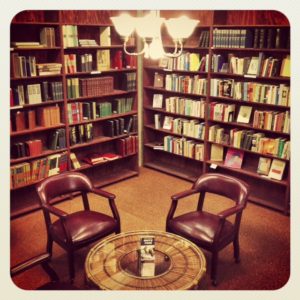
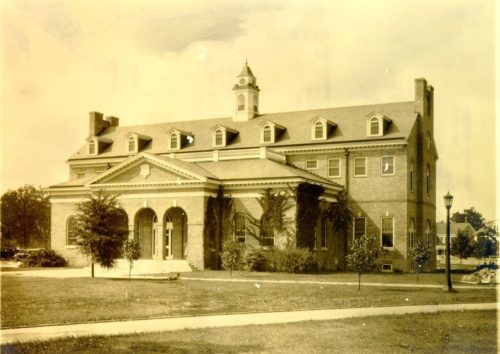



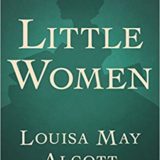

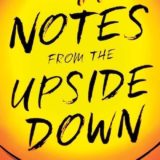






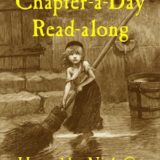
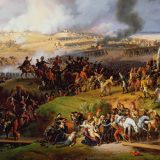
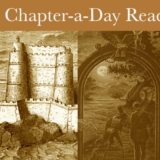


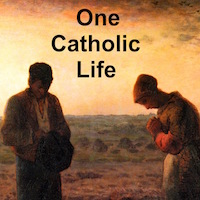
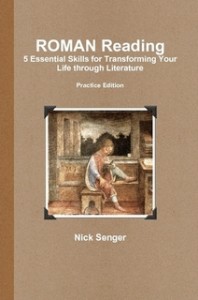

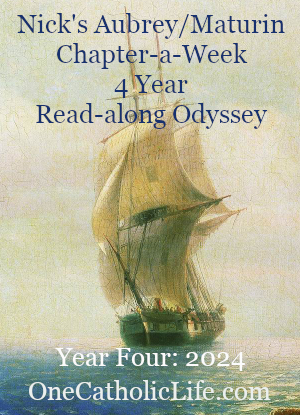


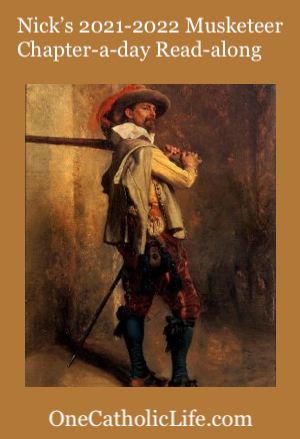
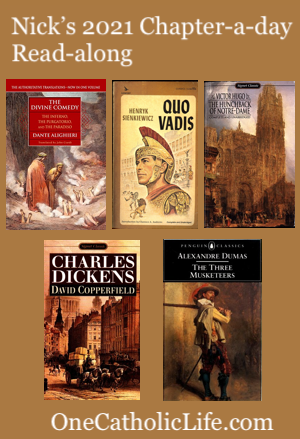
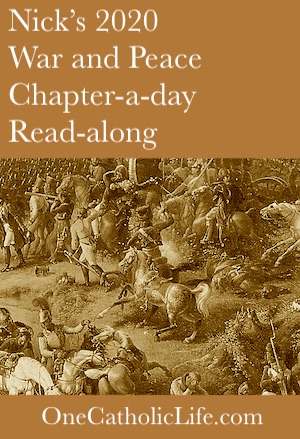
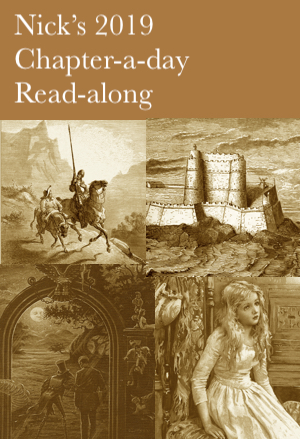
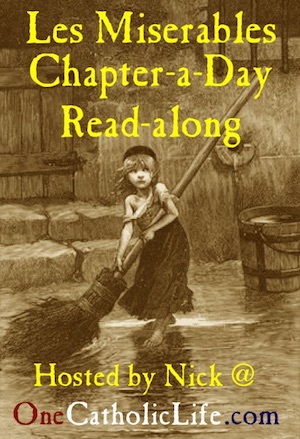



What a fantastic adventure and complex story. I am impressed with your sleuthing skills, Nick! I love to find names and especially dates in my used books. It’s a bookish connection to a kindred spirit, I think. Looking forward to our George Eliot year.